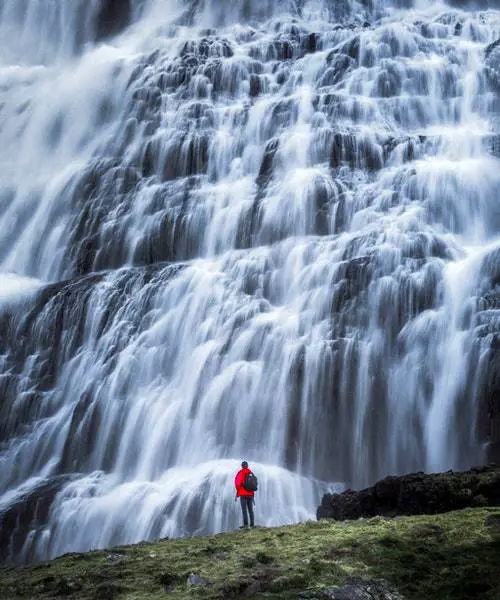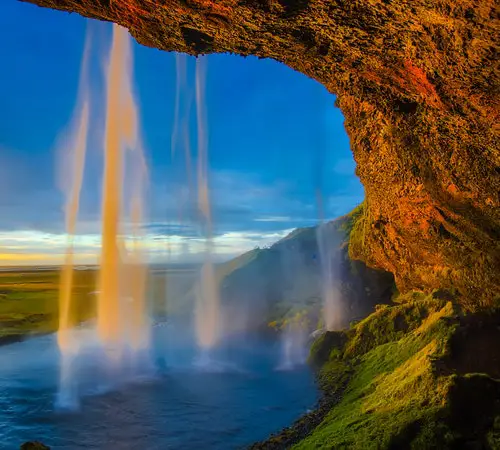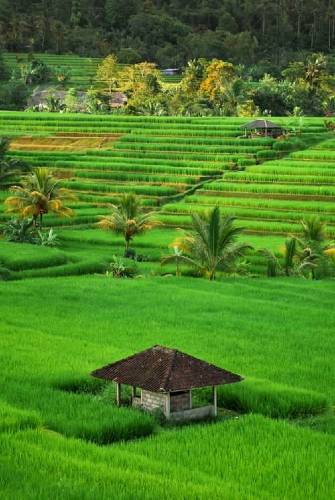What is Runoff? – Types, Factors, Effects, and Mitigation (all explained)
Compiled by Stanley Udegbunam || Nov 22, 2020
AFRILCATE
WHAT IS RUNOFF?
Runoff is that portion of rainfall, snowmelt, or irrigation that flows on the land surface, sub-surface, or seeps away from the water table into surface streams, rivers, drains, or sewers.
Runoff is the excess water that flows over the land surface instead of being absorbed into groundwater or evaporating.
It is a major component of the water cycle.
A land area that produces runoff draining to a common point is called a watershed.
TYPES OF RUNOFF
There are 3 types of runoff.
They include:
- Surface runoff
- Sub-surface Runoff
- Baseflow

-
Surface Runoff
Surface runoff occurs when rainfall exceeds a soil’s infiltration capacity and all surface depressional storage is filled up.
Some soils (i.e clayey soil) have a very low infiltration rate.
Infiltration rate is a measure of the speed at which the soil is able to absorb water.
if the soil’s infiltration rate is relatively low compared to the rain intensity, then the runoff rate will be high.
Surface runoff is also called overland flow and it is driven downhill by gravity.
2. Subsurface Runoff
Sub-surface runoff is also called inter-flow.
It is that part of rainfall that first infiltrates into the soil without getting to the water table.
Instead of percolating downwards, it moves laterally in the zone of aeration till it enters the stream, river, or ocean.
3. Baseflow
This is groundwater that seeps back into the surface through streams, oceans, etc.
The movement is very slow and it can bring with it whatever chemicals the groundwater has collected for thousands of years moving beneath the earth’s surface.
It’s also called “groundwater runoff or delayed runoff”.
When each of these different runoff types enters the stream, they form what we call the total runoff.
The total runoff in the stream channels is termed streamflow and it is generally regarded as direct runoff or base flow or both.
Stream flow (Total runoff) = surface runoff + Base flow
Note: The sub-surface runoff is not included as a component of the streamflow because it’s absorbed by plant roots for growth purposes.
Therefore, sub-surface water don’t seep into streams.

views of runoff from high hills
FACTORS AFFECTING RUNOFF
- Precipitation type
- Precipitation Intensity
- Soil Characteristics
- Slope
- Land Use
- Vegetation
- Urbanization
- Other Climate and Meteorological factors
-
Precipitation types
The tendency of rainfall to start off immediately as surface runoff is high compared to precipitation in the form of snow.
Hence the precipitation type is a factor that affects runoff but it also depends on their respective intensities.
2. Precipitation Intensity
If the amount of rainfall or snowmelt hitting the soil surface in a short time period is more than the infiltration rate of the soil, then runoff will quickly occur.
Care to know more about snowmelt?
See our guide: Snowmelt: Introductory Guide
3. Soil Characteristics
The porosity and permeability of the soil affect the volume of runoff to a very large extent.
Sandy soil quickly absorbs water and will lead to a lesser surface runoff compared to clayey soil due to its compact nature.
4. Slope
The slope of a surface is another important consideration.
If the surface is flat, then the water will sit undisturbed on the soil surface creating more time for it to be absorbed.
In contrast, water will hastily flow down the slope in a steeped surface.
5. Land use
Land use and land management practices like tillage have a great effect on the runoff yield.
Using heavy machinery on farmland will cause soil compaction which will lead to lesser infiltration and yield higher runoff.
6. Vegetation
Areas with cover crops or thick layers of mulch of leaves contribute less runoff by slowing down the velocity of surface water.
It also protects the soil from the damaging effect of heavy rainfall.
7. Urbanization
Impervious surfaces (roads, parking lots, and sidewalks) are normally constructed during land development.
During rainstorms and other precipitation events, these surfaces along with rooftops, carry polluted stormwater to storm drains, instead of allowing the water to percolate through the soil.
Urbanization increases surface runoff, by creating more impervious surfaces.
These surfaces are built from materials like asphalt and concrete making it difficult for water to infiltrate the soil not to even mention percolating downwards to the aquifers.
8. Other Climate and Meteorological Factors
Other factors such as temperature, wind, season, and relative humidity also affects runoff.

The factors affecting infiltration are quite similar to the factors affecting infiltration.
One major difference lies in the fact that evapotranspiration has a major role to play when talking about infiltration.
EFFECTS OF RUNOFF
1. Erosion: This is the major cause of surface runoff.
Surface runoff cause erosion of the earth’s surface carrying waste materials and causing land pollution.
2. Flooding: This is very common in urban settings due to the impervious surfaces.
When the downpour exceeds the drainage rate or system in place, flood is bound to occur.
3. Environmental Pollution: When runoff flows along the ground, it can pick up soil contaminants such as petroleum, pesticides, or fertilizers that become discharge or overland flow.
These pollutants deposited in various locations are not only harmful to humans but the entire ecosystem.
4. Agricultural Impact: In the process of erosion, the fertile layer of topsoil is washed off by surface runoff.
Farmers rely on the topsoil to grow crops. Tons of topsoils are lost to runoff every year.
This results in high yearly monetary losses in the agricultural sector.
5. Depletion of underground resources: Due to decreased infiltration, the water table may be lowered and aquifers will be hardly replenished.
If underground water usage becomes exceeds the recharge rate, the underground resources can be depleted and wells will go dry.
One way to replenish underground water is through artificial recharge.

MITIGATION OF RUNOFF
The practices and measures listed below will help reduce runoff;
- Erosion control measures should be laid down for farms and construction sites.
- Land use development controls aimed at minimizing impervious surfaces in urban areas.
- Communities can plant cover crops and other vegetation. This prevents the soil from the droplet impact of the rain and reduces surface runoff.
- Flood control and retrofit programs, such as green infrastructure.
- Farmers and gardeners should enhance the soil infiltration capacity through crop rotation.

crop-rotation practices
- Soil compaction should also be reduced in farmlands and construction sites through controlled traffic.
By alternating deep-rooted and shallow-rooted plants, soil structure is enhanced, the infiltration rate is improved and run-off is reduced.
Controlled traffic is the practice of running farm machinery over a designated path in the field.

controlled traffic helps mitigate surface runoff
The machinery follows the same path from event to event, year to year, so that compaction resulting from such passes will be confined to the smallest possible proportion of the field.
Reduced soil compaction can hinder erosion and prevents runoff from going into waterways.
- Chemical like fertilizers and pesticides used in agriculture and landscape maintenance should be regulated.

Crop rotation and controlled traffic don’t just mitigate runoff, they also help improve infiltration.
Soil defect isn’t a permanent feat and it can be readily rectified.
To this effect, we’ve compiled an article that shows you the best and proven way to improve your soil’s infiltration rate inorder to achieve maximum yield.
See it here: 5 Best Ways to improve Infiltration Rate
DO YOU KNOW?
The study of the distribution, flow, and quality of underground water is called hydrogeology.
DO YOU KNOW?
The study of the distribution, flow, and quality of underground water is called hydrogeology.

